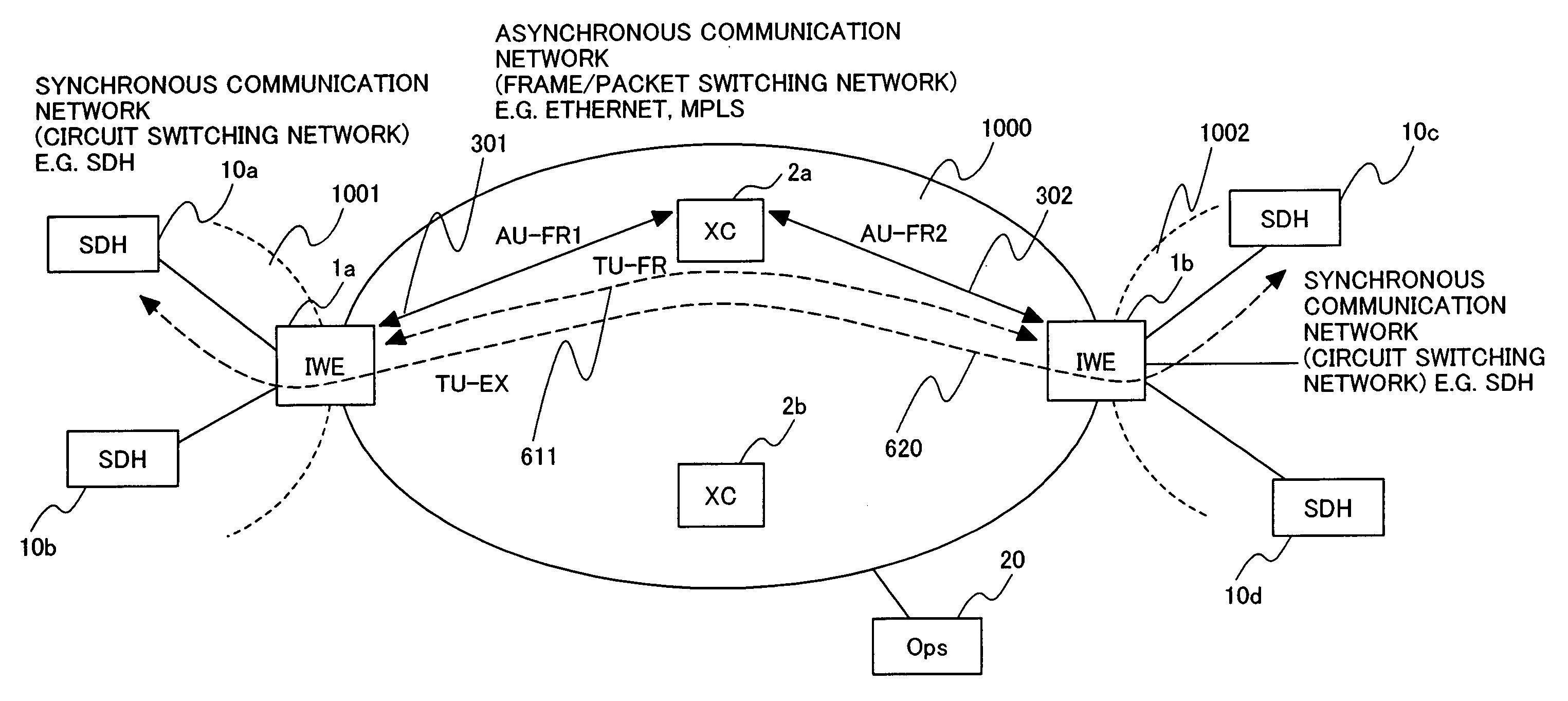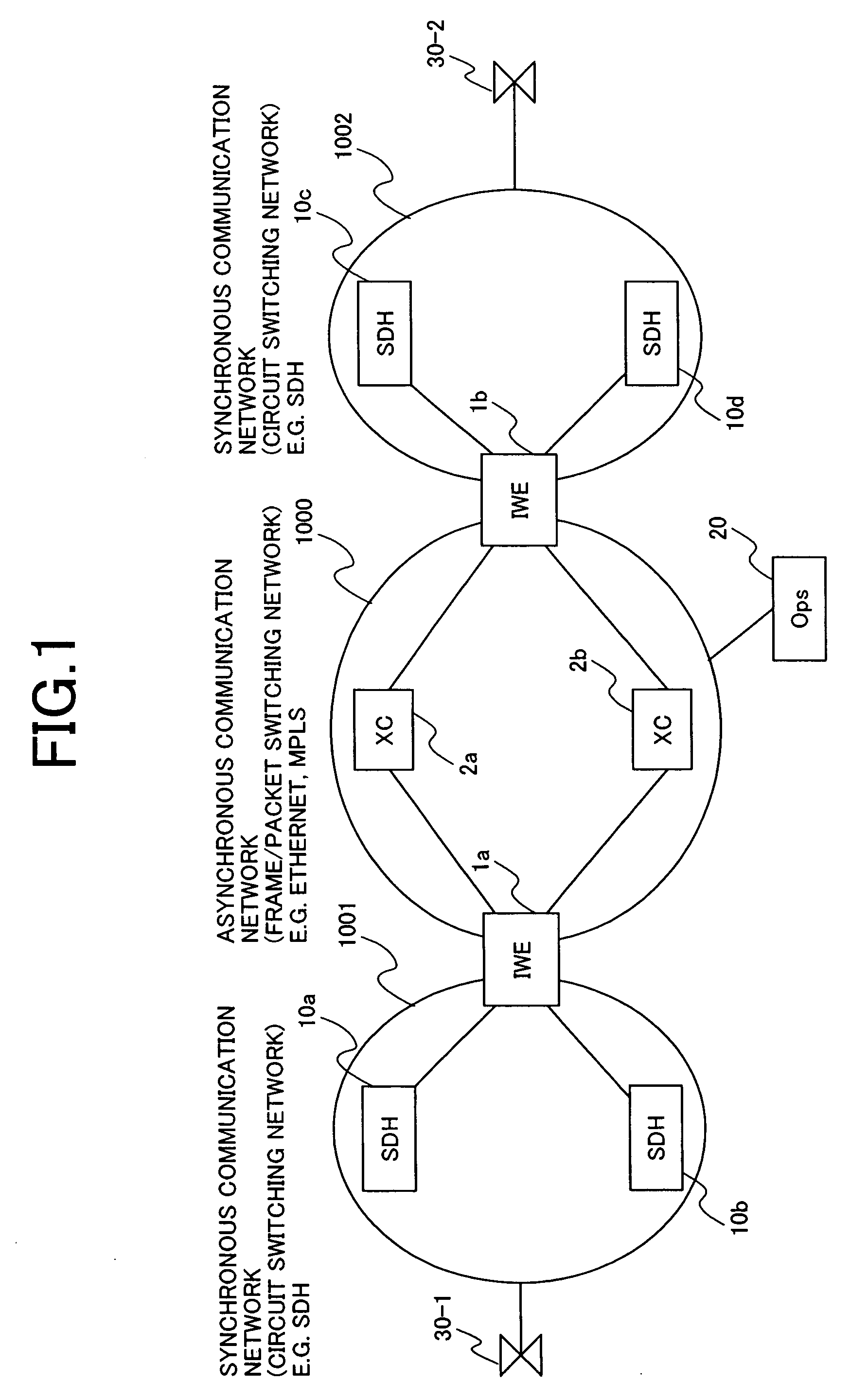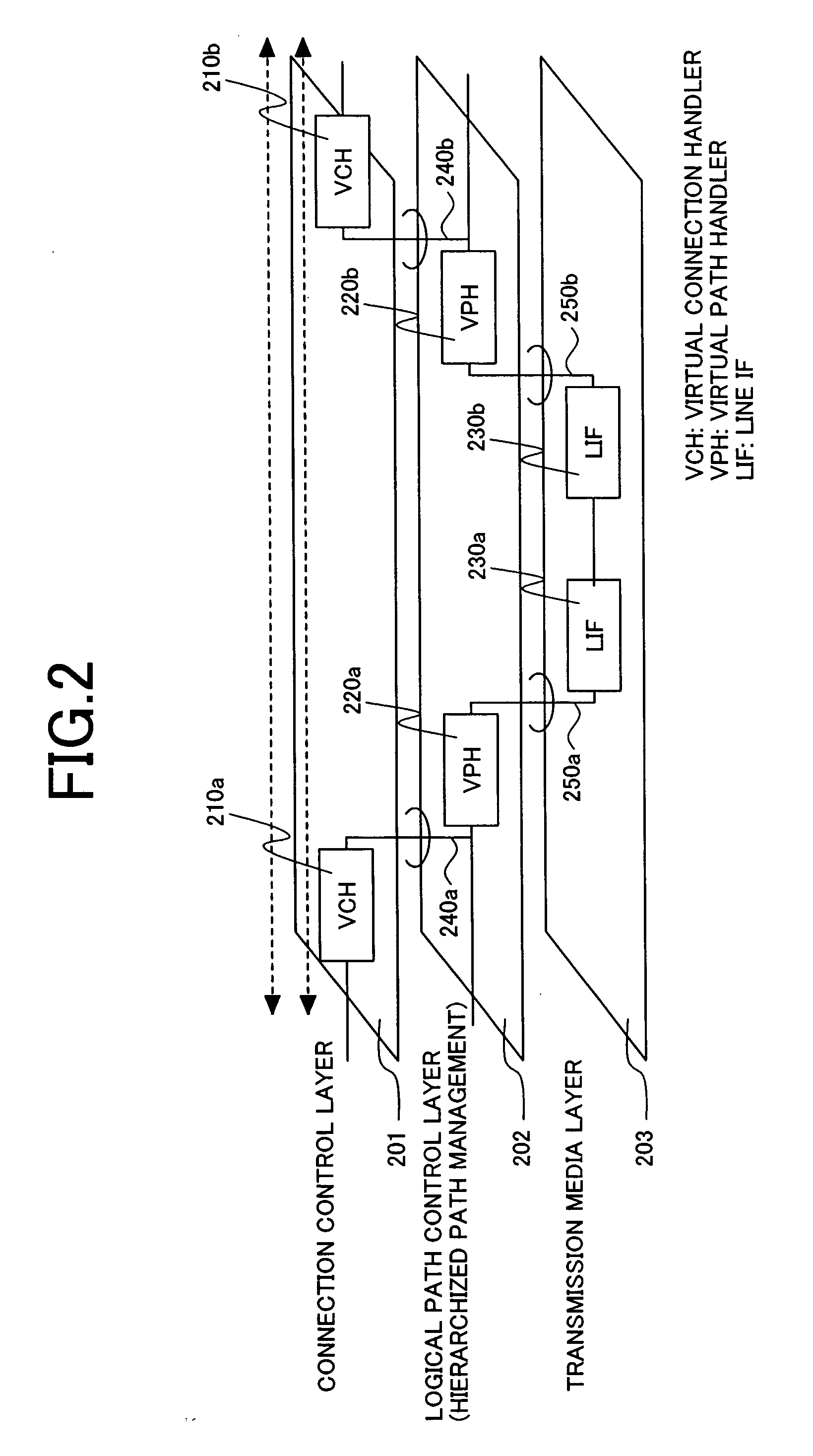System apparatus and method for interconnecting TDM and frame/packet communication networks
a technology of system apparatus and communication network, which is applied in the field of system apparatus and method for interconnecting tdm and frame/packet communication network, can solve the problems of difficult to imagine that the shift to next-generation network will happen immediately, and achieve the effects of improving communication quality, improving network management convenience, and expanding the service region supported
- Summary
- Abstract
- Description
- Claims
- Application Information
AI Technical Summary
Benefits of technology
Problems solved by technology
Method used
Image
Examples
first embodiment
[0058]FIG. 5 shows the protocol stack in this invention. On the synchronous network side of IWE1a and IWE1b, hierarchized path control is performed by sections 503-1, 503-2 and paths 502-1, 502-2 managed by SOH (Section Overhead) and POH (Path Overhead) of an STM synchronous multiplexing frame. IWE has a physical circuit 501-1 on the synchronous network side, and a physical circuit 510a on the frame communications network side. For example, the former accommodates synchronous circuits, such as E1 and T1, and the latter accommodates packet communication lines, such as Ethernet. Within the packet communication network, a tag (label) for logically building a circuit is inserted in layers higher than the data link layer of an OSI reference model. For example, in a L2 network, these logical paths can be built using a VLAN (Virtual Local Area Network) tag, and in a MPLS (Multiprotocol Label Switching) network, they can be built using a label. Hence, in the packet communication network, th...
second embodiment
[0062]FIG. 6 is a diagram describing the hierarchized logical path control in the asynchronous network. The network configuration of the example is identical to that of the description of FIG. 3.
[0063] Here, a flow (session) ID which is consistent within the asynchronous network in the setup of the high level path ID is used. The low level path IDs AU-FR1 (311), AU-FR2 (312) are identical to those of the first embodiment (FIG. 3).
[0064] The multiplexing method from the synchronous frames in the IWE1a to the asynchronous frames is identical to that of the first embodiment (FIG. 3). A flow is first identified for destination identification. For this purpose, the channel defined by the synchronous network is extracted from the phase information obtained by the AU pointer and TU pointer. After selecting a suitable path from the delivery paths which can reach the destination (opposite IWE) and generating frames, the frames are sent to the asynchronous network.
[0065] TU-FR (611) which i...
PUM
 Login to View More
Login to View More Abstract
Description
Claims
Application Information
 Login to View More
Login to View More - R&D
- Intellectual Property
- Life Sciences
- Materials
- Tech Scout
- Unparalleled Data Quality
- Higher Quality Content
- 60% Fewer Hallucinations
Browse by: Latest US Patents, China's latest patents, Technical Efficacy Thesaurus, Application Domain, Technology Topic, Popular Technical Reports.
© 2025 PatSnap. All rights reserved.Legal|Privacy policy|Modern Slavery Act Transparency Statement|Sitemap|About US| Contact US: help@patsnap.com



